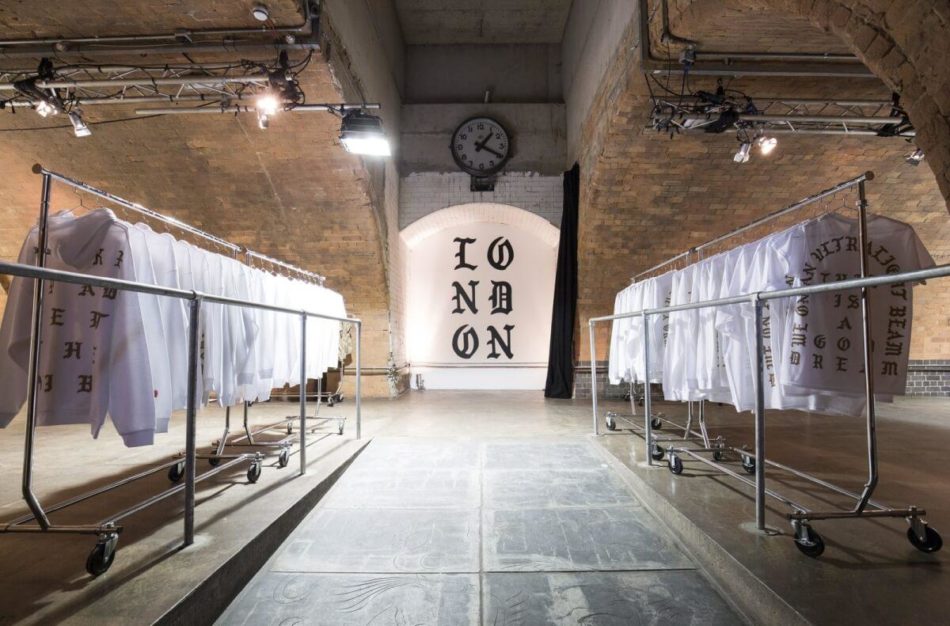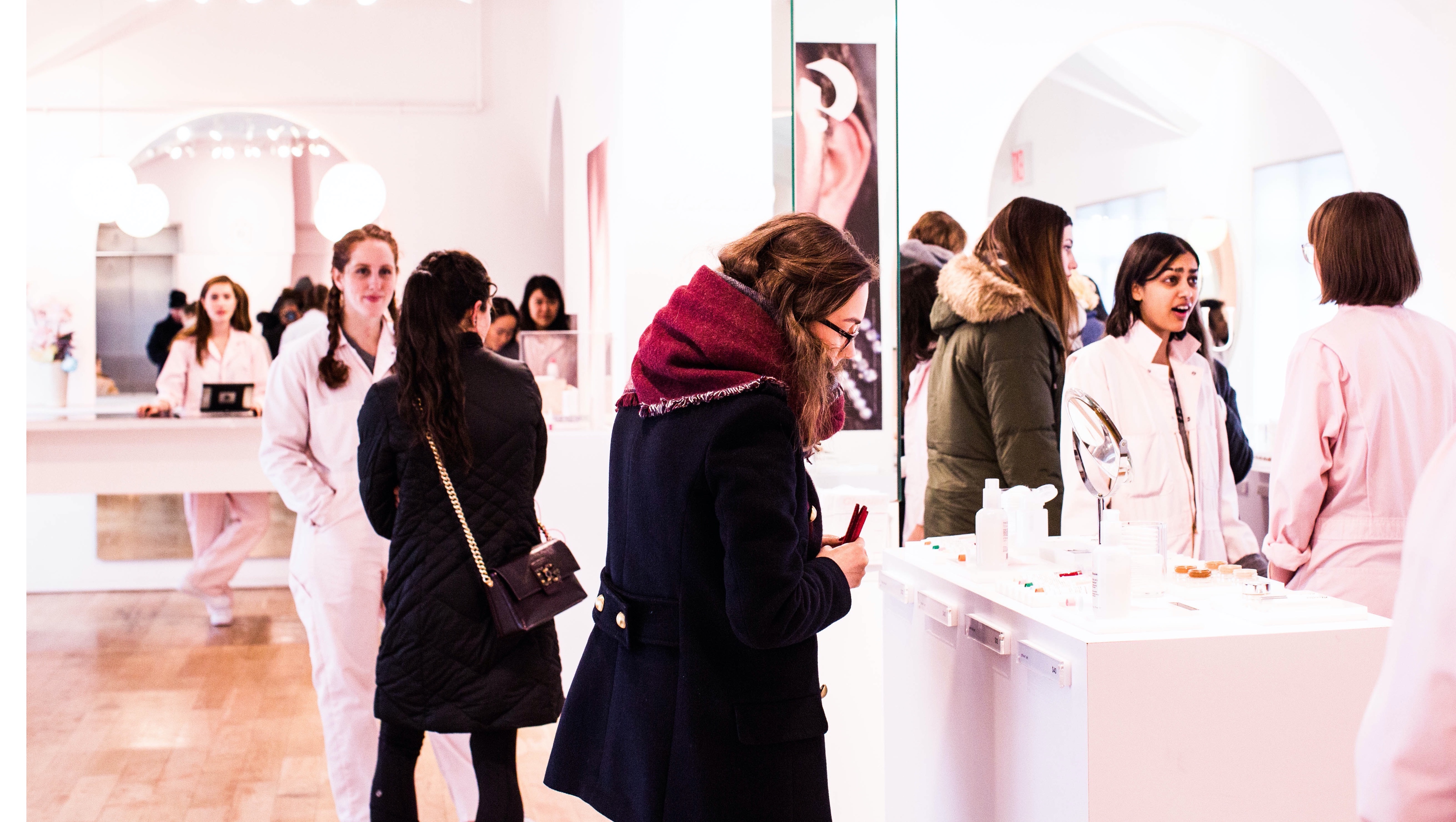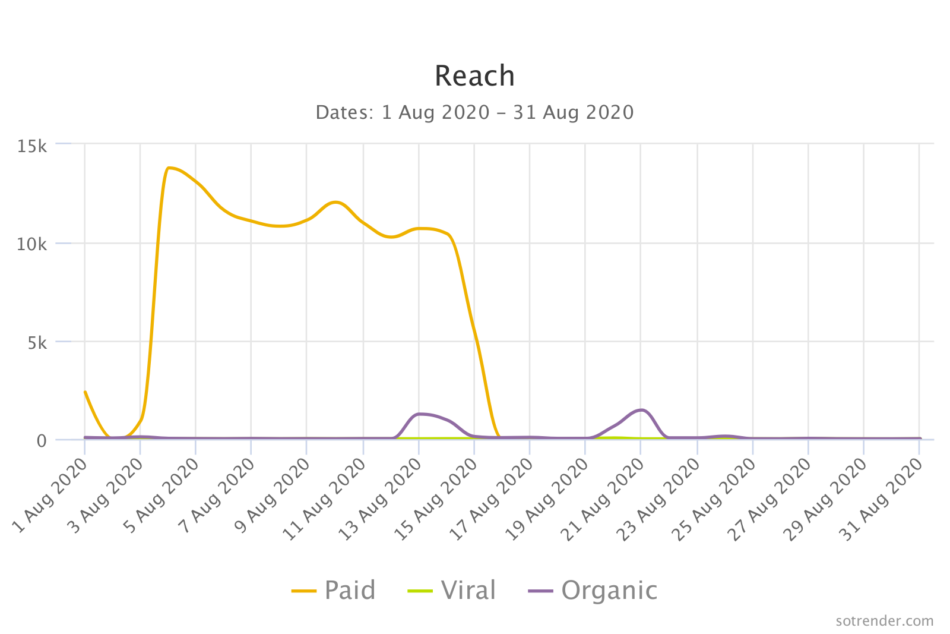A rise in your online store traffic means an increase in visibility. However, just because your store is online doesn’t mean that you have to keep all of your marketing efforts there. Here’s why you should include offline marketing tactics such as physical events to get better traffic.
How important is it to increase online store traffic?
Offline marketing for brick-and-mortar stores, and online marketing for eCommerce stores: it’s long been assumed that this arrangement makes complete sense, but of course it doesn’t. When was the last time you were truly offline for any decent stretch of time with no smartphone in your pocket or laptop at hand?
Today, any retailer hoping to thrive must take advantage of all tactics available to them — and just as physical events can be effectively promoted online (particularly through high-ROI Facebook marketing), they can also prove incredibly potent for promoting eCommerce brands.
In this post, we’re going to quickly look at forms of marketing, then set out how you can use physical events to markedly expand your online store’s traffic.
Offline versus online marketing
You can think of offline marketing as traditional marketing because it’s been around for so much longer than its digital-age alternative. Offline marketing involves classic methods like putting up posters and billboards, running TV or radio ads, sending out promotional mailers, and — most notably here — setting up attention-grabbing events.
Online marketing, as you’d expect, involves every promotional method that you can route through the internet. YouTube and podcast ads replaced TV and radio ads while marketing emails replaced promotional mailers. You can even run virtual events, and that option has become significantly more popular during the COVID-19 pandemic, though it’s more common to see online seminars than anything else.
There are four main differences between the two: popularity, audience, impact, and trackability. Online marketing is now far more popular, which makes offline marketing the underdog — if it’s done well, it can really stand out. Offline marketing is better for older people, with online marketing ideal for generations who spend a lot of their time browsing the internet.
Each approach is impactful in a different way. Offline marketing materials can take advantage of the senses of touch, taste (think of food samples in stores, for instance), and even smell. Back in 2014, car company Nissan worked with Air Aroma to develop a unique brand scent to be used at all trade shows (see the above example of such a show).
On the other hand, online marketing materials need to rely on sight and sound, but they can do spectacular things with them. Just think about what modern graphics can achieve: digital effects that would be all but impossible to recreate in the physical world.
The last main difference is trackability, and that’s where online marketing has a clear advantage. It’s possible to track offline marketing methods but it’s much more awkward to manage this. Through cookies and other forms of online tracking, you can get rich and near-immediate feedback from your online campaigns.
However, the line between offline and online marketing is increasingly blurring. For instance, the use of custom QR codes in physical marketing materials allows businesses to track engagement from offline campaigns and seamlessly direct consumers to their online platforms.
If your online store is on social media, you can track your store’s social media reach with Sotrender, an AI-driven social media analytics tool.
Now that you know the differences between the two, we can move on to three ways you can improve online store traffic.
You can build hype through showcases
It’s important for online stores to update their product ranges on a semi-frequent basis. After all, there are few words more powerful in retail than “new” — but when you have something new to show off, you need to make an effort to do just that instead of just cycling it into your inventory with little more than a few marketing emails to promote it.
This is particularly true for certain product types that fundamentally rely on qualia or subjective experiences. In addition to well-established types like foodstuffs and perfumes (you can’t exactly taste a new snack through a laptop screen), there are now complex electronic devices that lean on sensations: here’s an example in the form of a mood-altering headband. How can people trust that it works? Ideally, they’d try it themselves.
Although Hapbee wearables raised quite a lot of money through crowdfunding wielding some high-profile testimonials, arguably the results could have been even better had it been possible to fully convey the experience on a wider scale (it did showcase the tech at some events, as seen in the video below.
While it’s of lesser significance due to merely being part of a greater whole, the advanced haptic feedback in the DualSense controller for the new PlayStation 5 has caught a lot of attention in the media, being described as mind-blowing by some leading tech reviewers with huge audiences. Had the console itself not been enough of a selling point (it was always going to do remarkable numbers), Sony could have secured a significant edge over the competition by allowing members of the public to try it out first-hand.
With incredible tactile feedback and a refined form factor, the DualSense makes the PS5 feel like a next-gen experience.
Our review: pic.twitter.com/7LwyfNHXf2
— IGN (@IGN) November 27, 2020
This is where product showcases can be so useful. You can strongly relate this to running a pop-up shop, only you don’t need to invest in any point of sale systems or even get permission to set up a stall. You can simply take the product you want to showcase, go somewhere suitable, show it off, and have some promotional leaflets to hand out when asked.
This does require the product in question to be something that you can show off, of course — a drone toy, for instance, as opposed to a phone case — but you can always demonstrate something by giving it away. Why not take a handful of products to give away through an in-person competition? As people enter, you’ll have ample opportunity to explain what makes your product so interesting — and anyone there who talks about it online (particularly those who win your competition) will give you more coverage. Additionally, part of making a brand feel inclusive and supportive involves using engaging visual content to promote it online. One effective way is to create posters online for event promotions or product showcases. This not only enhances your marketing strategy but also captivates a digital audience’s attention through creative and customized posters that resonate with them.
You can see this approach used for high-profile launch events, with phone manufacturer OnePlus having deployed such events to great effect in recent years. In 2019, it marked the launch of its OnePlus 7 Pro handset with launch events in three cities, each requiring a paid ticket to get in (lending a powerful air of exclusivity).
As you can see from the above video, these events were much glitzier affairs than the pop-up shop we looked at earlier. This made the brand feel vibrant and exciting, encouraging attendants to talk about their experiences and helping to cultivate brand loyalty (in that area, among others, every tech company is desperate to follow in the footsteps of Apple).
And while OnePlus hasn’t been able to keep that up during this troubled year, it has pivoted very smartly to AR events, holding such an event to mark the impending release of its OnePlus Nord device. This keeps the hype going and pushes brand devotees to buy the new devices as early as possible, even though they most likely don’t need them.
You can sell offline through pop-up shops
Owning or renting brick-and-mortar premises for a traditional store is really hard for most retailers to justify at this point. It’s expensive, difficult to organize, unlikely to return that much value, and quite vulnerable to disruption (as evidenced by the COVID-19 lockdown causing the mothballing of so many retail businesses). But you don’t need such a store to sell offline on occasion: you just need to know how to run a pop-up shop.
A pop-up shop is a temporary setup (typically a stall in a busy retail area) through which you can sell products from your online inventory. There are plenty of good examples (HubSpot, for instance, has some), but I’ll pick one from 2016: Kanye West’s Life of Pablo pop-up shop ran for a few days in 21 cities across the world, and West claimed that it sold $1m in merchandise. True? There’s really no way to tell — but photos make it clear that the stores were indeed very popular.

Image credit: Getty Images
Note the simplicity of the layout in the London pop-up store pictured above. No fancy visuals, no polished presentation. Just some logos and items of clothing. This is part of the charm of pop-up stores. They’re exclusive and don’t need to look impressive — plus the basic setup reinforces the ephemeral nature of the store (everything could be stripped away within an hour).
Running a pop-up shop is easier than you might think: the key is getting the point of sale (POS) system right. With a cutting-edge POS system, you can seamlessly sync your offline sales with your online stock tracking — and with iPad POS you can sell via tablet screens, making it much easier to take full advantage of high-resolution product photos.
Product photos are worth investing in during COVID. Even with a pop-up shop, it would be difficult to have a product showcase. After all, it wouldn’t be safe to have numerous people physically inspect the same product. You need to disinfect it very carefully between inspections, and even then it would pose a threat. Both your online and offline approaches will improve by including better product photos.
On the whole, conventional brick-and-mortar retail isn’t coming back for most niches (that’s the inescapable conclusion at this point), but that doesn’t mean that selling in person is off the table as an option. Instead, we can expect to see future shopping areas built around modularity and flexibility, resembling traditional marketplaces with stalls more closely than they resemble malls.
You can sponsor or host charity events
It isn’t enough to simply have great products at competitive prices: you also need a brand identity that’s memorable and inspires support from members of your target audience. Consumer interest in matters such as operational stability and corporate ethics has risen significantly in recent years. People are much less likely to become loyal customers if they don’t believe that your company operates in laudable ways.
Due to this, sponsoring or hosting some charity events that reflect the values you support can be a fantastic way to promote your brand. The charity (or charities) selected to get to raise some extra funds, and you get to prove your commitment to more than simply making money. It’s often as simple as reaching out to a charity event that’s already taking place and offering to fund something in exchange for a handful of mentions and a chance to be in attendance.
This is exactly what Booking.com did with the Women in Tech element of the 2017 Web Summit. In addition to earning some goodwill from supporting such a popular cause, it had the chance to talk about its business — and perhaps sell itself to many professional women looking for businesses inclined to support their development.
If you take this approach, though, be extremely careful with it. The use of a cynical quid pro quo is no less common now than it used to be, but it is markedly less effective, and there are two main reasons for this. Firstly, everything you do and say in the public sphere is not only observed but recorded from numerous angles — and once you put something out there, you can’t take it back, no matter how hard you try to scrub the records.
So excited to announce our 2018 partnership with @WebSummit. Together we’ll host a dedicated ‘Women in Tech’ networking and mentoring program at the flagship event, as well as other initiatives at @CollisionHQ and @RISEConfHQ.https://t.co/85b5QJqAlX #TBEX #TBIN #TravelMassive pic.twitter.com/5EUcysAybh
— Booking.com News (@bookingcomnews) April 24, 2018
This means that a charity sponsorship announced at a bad time or in a manner that’s obviously self-serving will end up hurting you. This ties into the second reason: while younger generations may not fundamentally be more likely to notice cynical charity, they’re far more likely to care about it. They don’t just want to see results: they also want to see principles.
They want to know that the stores they frequent are run and staffed by people who genuinely care about altruism and sincerely want to support certain charities for reasons other than the good PR. If there isn’t a charity that you personally care about, speak to your employees to see if they’re passionate about any — and if you still can’t find anything, then at least be honest when you sponsor an event (don’t, for instance, claim to have followed the charity for years).
Conclusion
We hope that we managed to inspire you to plan your future physical events to increase your online store traffic. It’s obviously not the ideal time to run physical events. Even now that we’ve moved away from the major COVID-19 lockdown, brick-and-mortar stores haven’t recovered, and many people are still reluctant to cluster in public spaces. But social activity is resuming at a steady pace, and you can actually stand out by being among the earliest businesses to resume in-person promotion.
And when things have fully opened up (most likely due to the widespread distribution of an effective vaccine), you should make a concerted effort to make physical events integral to your overall strategy. The future is in hybrid retail and hybrid marketing.









